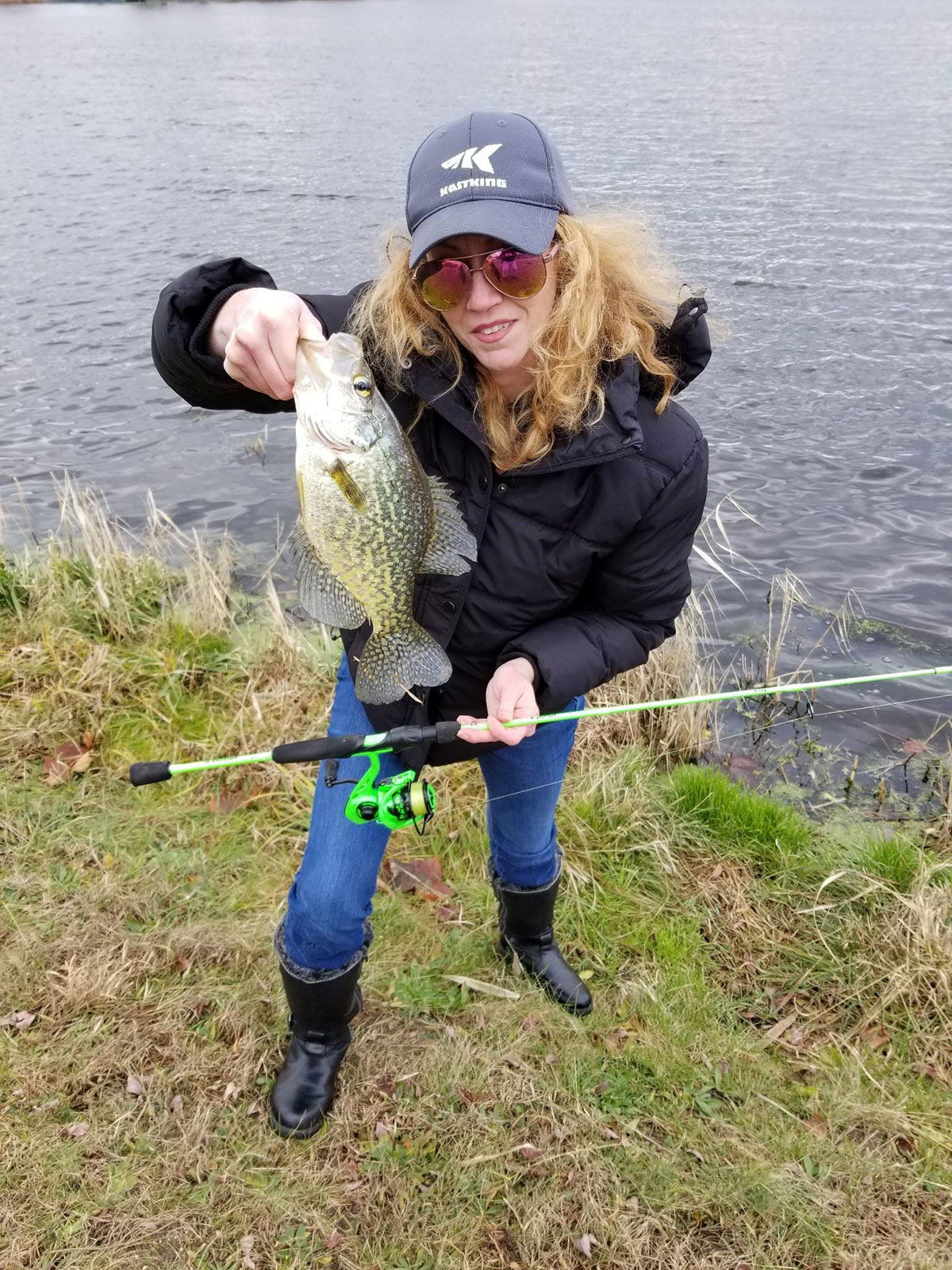
A light approach to a feisty freshwater favorite.
One of my favorite fish to target is crappie; it’s also a favorite of many other anglers in my area, which is why these fish have become accustomed to being bombarded by a plethora of lures hurled at a relentless rate in their faces. Thus, the lightest gear possible will hide your presence; the fish won’t know you’re there until they are on your hook.
Finesse is a style of fishing born in Japan with smaller spool reels and lighter rods developed for a more delicate presentation to entice a bite from any highly pressured fish. Most instances of finesse fishing have been heavily related to bass fishing, with many tackle companies releasing their own versions of finesse-specific rods and reels that are much lighter than typically used for bass. This gear has been increasingly growing in popularity with bass anglers and panfish anglers alike in recent years. BFS (bait finesse fishing) has been at the forefront of this style of fishing, but SFS (spin finesse fishing) reels are available as well.
You can use the same lures and techniques that you have used with your standard ultralight setup, just on a smaller scale. Think reels that can send a 1/32-ounce lure a country mile with a rod to match. Bigger is not always better and gear that is capable of throwing the smallest-sized lures have surely shown us less is more.
In early spring, like many other fish, crappie migrate to shallow areas to begin their feeding binge before they mate. Good locations to pinpoint are areas with dark, muddy bottoms because they tend to warm quickly. Vegetation and structure are oh so attractive to these fish as they follow a meal, and it also offers cover to them. They also avoid becoming a meal for other predators. Once you locate the school, you will be sure to find them in the same locales yearly as they will typically remain their preferred spawning grounds. Crappie will continue to move in and out of these areas throughout the stages of the spawn.
Smaller presentations are perfect for pre-spawn crappie due to the colder water temps. A jig or a minnow under a float is a good choice. You’ll want to adjust the length between your bobber and lure accordingly, usually between 1 to 2 feet as the fish are much shallower. It is a finicky time of year as cold fronts can put a damper on the spawn and push crappie off of beds making it harder for anglers to catch those bigger fish. Stay on them.
Ideal conditions favor temps in a consistent range of 50 to 60 degrees. Since the spawn yields larger crappie, many anglers are tempted to keep what they catch, within limits of course; but a little extra conservation is always a good idea this time of year. A dropshot rig can prove very effective during the spawn; crappie will not venture very far from their nest and keeping the bait in the zone is everything.
Post-spawn crappie can be harder to predict. Some feed heavily; others may be lethargic. They will remain on the outskirts of the spawning location. Channels and bridges with a bit of a current become enticing migration destinations. Early summer crappie will remain in shallow to medium depths, with areas with weeds and pads providing habitat for minnows and insects ensuring that crappie will be nearby. Fish brush, stumps and outside edges of reeds that grow close to deeper water. In mid to late summer, crappie move out to deeper water where they can still be found relating to structure, weed lines, and current.
Crappie can be found in lakes, ponds, and rivers. They tend to like slower-moving water, but I have caught them in spillways with rough, churning water as well. If you are bankfishing, try drifting lures under a bridge or dock, or fish along a channel and underwater structure like tree stumps or submerged branches. Where you hook one more are bound to follow; be prepared to thoroughly work an area until you find them. Crappie are usually on the move with changing tides and weather patterns. By boat, electronics can greatly assist you in locating some prime spots, including ledges and drop-offs. Fishing a bank with overhanging trees is also highly effective
I have caught crappie on light to medium gear, but to truly enjoy the fight nothing beats ultralight. My favorite combo is a Zephyr 1000 SFS reel and a 6-foot ultralight spinning rod. I also go small on the jigheads, 1/64-ounce is usually what I use most of the time but I will downsize to 1/80-ounce if the bite is really tough. I like to use Eurotackle soft plastics up to 1 inch in length. Small lures and light line, 6-pound mono is my preference to fool the fish, but I have also had success with braid in the 4- to 6-pound range.
Hardbody lures can add excitement to crappie fishing and they are excellent search baits for locating active schools of fish. Some great choices are in-line spinners, spoons, and small crankbaits.




